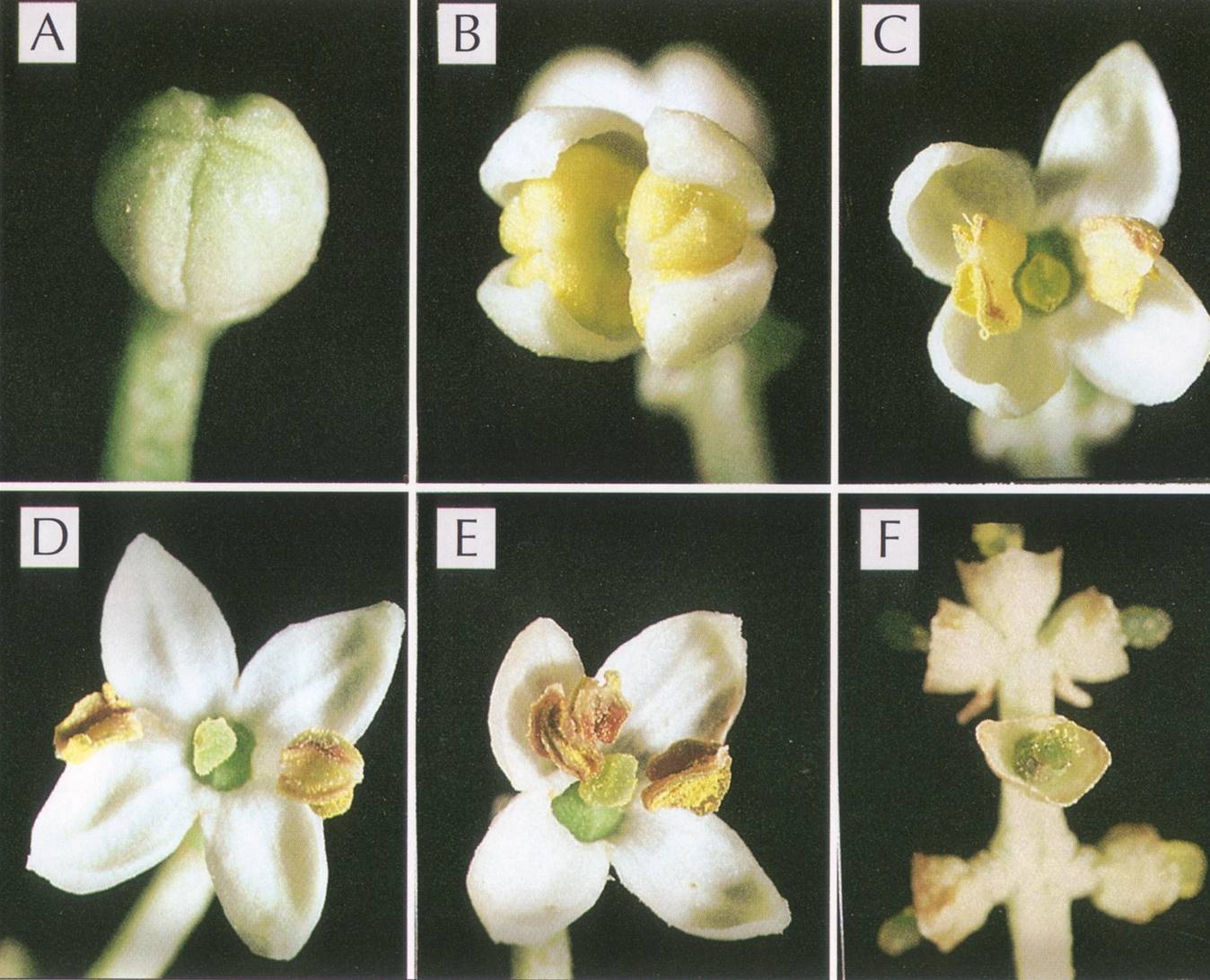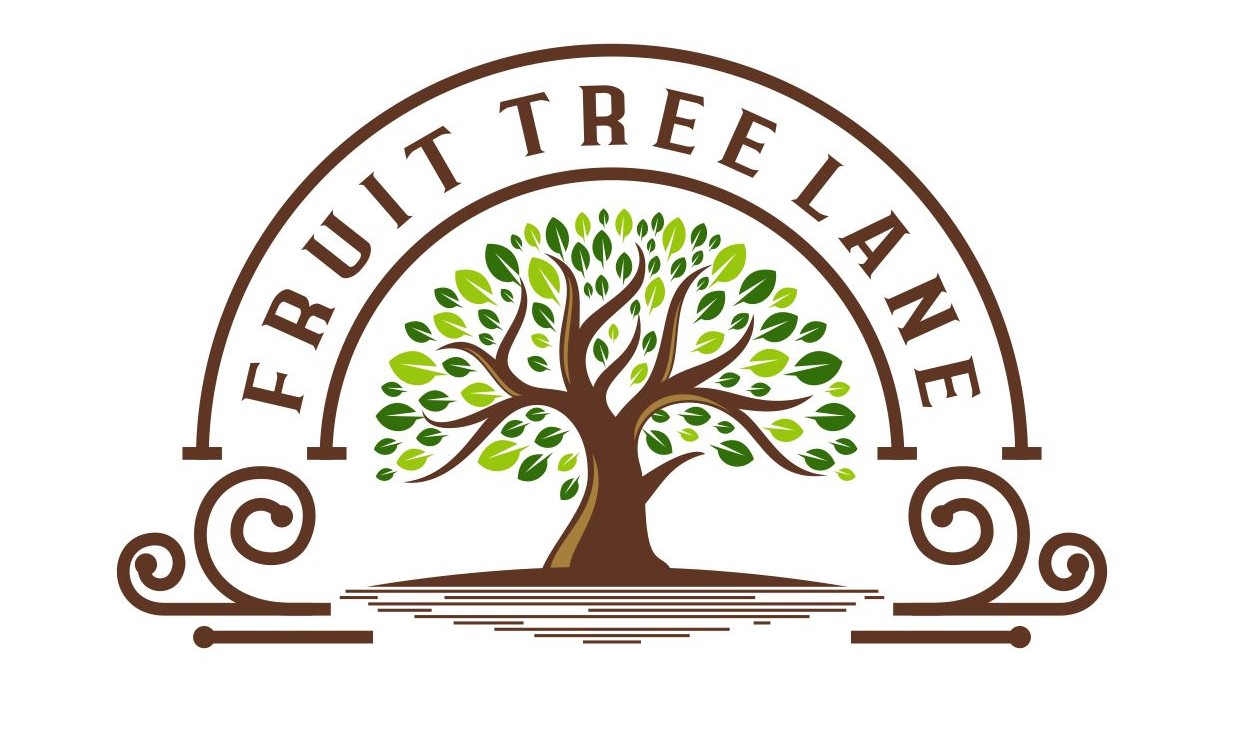Cross-pollination
Although most olive varieties are self-fertile to some extent, research has shown that cross-pollination generally improves the fruit set of most varieties especially when the environment conditions are not optimal. Generally having two or three different varieties growing in close proximity (30m) will facilitate adequate cross-pollination.
Arbequina, Pendulino, Coratina, Picual and Manzanillo are some of the main varieties used for cross-pollination. If a tree flowers well in the spring and does not set any fruit it may be an indication that cross-pollination is required.

Irrigation
Ensure that the trees are not water stressed during the period of flower induction and development which starts in late autumn early winter. In winter drought conditions, leaf development is favoured at the expense of flower development.
Water stress during late winter / spring is also a problem, resulting in malfunctioning flowers that do not develop correctly and prematurely drop without setting fruit.
Nutrition
Adequate levels of nutrients especially nitrogen, calcium and boron are required for optimal flowering and fruit set. A leaf analysis taken in mid summer will give a good indication of the trees nutritional status and fertilizer requirements.
Generally olives require either manure or other fertilizer on an annual basis for good fruit set.
It is common for growers to apply a foliar spray of boron and calcium in late winter just prior to bud burst to improve fruit set.
Excessive nitrogen fertilizer may also be a problem with some varieties, especially in warm winter climates because it tends to encourage excessive vegetative growth through the winter at the expense of floral development.
Environment
Hot dry winds during flowering are detrimental to pollination/ fertilization. Rain during flowering can also disrupt the pollination process.
Some winter chilling is required for flower initiation. Some research work evaluating the performance of olive varieties in a warm winter, summer rainfall climate has been undertaken in Australia. Preliminary data from this trial suggests that the varieties which look most promising for warm winter areas include the following:
Oil Varieties: Arbequina, Arecuzzo, Coratina, Del Morocco, Koroneiki and Picual.
Table Varieties: Manzanillo, Azapa, Nab Tamri and South Australian Verdale.
Growers who intend to plant olives in a warm climate, outside of the traditional climatic zones should regard the initial planting as a trial and not a commercial venture until varietal performance is proven. In most cases, the suggested varieties will bear some fruit in warm climates but reliable commercial yields may be difficult to obtain.
Pest and Disease
Pest and disease problems can severely affect floral initiation and flowering eg: Peacock Spot, Scale, and Olive Lace Bug.
The general tree stress caused by these problems is detrimental to the flowering process and often causes serious crop failure.
Pruning
If fruit yield has been poor in previous seasons it is recommended to wait until the trees are flowering in spring before pruning. Then if pruning is required only prune the branches that are unproductive so that you leave as many flowering branches as possible.
Alternate bearing (trees bearing large crops one year and none the next) To manage alternate bearing you need to prune heavily in a heavy bearing year and remove clumps of fruit with relatively few leaves- fruit thinning is the only real way to limit alternate bearing.


Comments 29
Hi,which variety can be set fruits in persist rainfall in early summer?
Hi, Thank you for the valuable tips , and I planted some olives in Dubai ,10 years back. but still I can’t get the fruits from it. could you please suggest some nutritional tips for the good flowering and fruit setting
Hi
Which varieties should I look at for sub tropical Brisbane?
Hello and thanks for your informative website.
What olive varieties would suit a cold climate, 850mts altitude, southern tablelands (Krawaree, half an hour south of Braidwood). Acidy soils, granite gold country, frosts in winter.
Thank you
Author
Hi Felicity,
I would plant one or more of the Italian varieties Leccino, Pendulino, Frantoio or Coratina. The Spanish varieties Picual or Hojiblanco would also be worth a try.
I have just planted twelve olive trees. 5 paragon, four Kalamata and 3 Mission so do I need cross pollination trees as well. This is the start of our olive grove. Kellys Plains near Armidale
Author
Hi Rhonda,
You will not need any more trees for cross pollination. The 3 varieties you have will cross-pollinate as long as they are within a 30m radius of each other.
Hi Admin,
I live in Melbourne and have a grafted Kalamata about 19-12 yrs in a sunny location and well drained area in my back yard.
Each year loaded with flowers however, unfortunately I’ve only ever seen one solitary olive.
There are other olive trees about 50mtrs away.
What can I do to ensure I get produce or is it just an ornamental now?
Cheers,
George
Hello Admin, I have a Nab Tamri Olive I initially bought for its ornamental appeal. Now I’ve decided to capitalise on its Fruit too. I’ve been bitten by the preserving bug. Do I need another tree for cross pollination and which would be best for the Bendigo area of Victoria please? Thanks Robyn.
Author
Hi Robyn,
The Nab Tamri should produce reasonable crops on its own but having a another variety nearby for cross-pollination should always improve the fruit set. For a large table fruit as a pollinator I suggest UC13A6, Barouni or Manzanillo
Hi
Looking at using olives for hedging in our backyard and producing fruit for eating. We live in the Illawarra – What varieties would you suggest? We were looking at Coratina, Mazanillo and Picual. Would one of these be better than the others?
Thanks!
Author
Hi Tara,
They would all be suitable. Keep in mind, though, if you hedge the trees you will greatly reduce the amount of fruit set. As most of the fruit is produced at the tips of the branches of 1yr old wood. Manzanillo would be the best table fruit variety.
Hi Greg,
Thanks for the information you posted on your website, very helpful.
My farm is in Federal NSW at about 120 meter of an altitude, and I’d like to plant 2 acres of olive trees for oil production and 1 acre for the fruit it self. We enjoy lots of rain there, winter can get cold especially at night time, and we enjoy basalt red/black soil that a bit acid. I am interested in your thoughts about that and whether it is viable or not, and if so what type of trees I should use.
I appreciate your answer.
Cheers.
Amit
Author
Hi Amit
Olives can perform well under the Northern NSW conditions but variety selection and grove management are important.
Key management issues
1. Adequate drainage is essential. Olive do not tolerate poor drainage. We recommend planting the trees on a raised bed.
2. Fruit disease. Summer rainfall can be problematic with some varieties of olives as it favors the development of the fruit rot fungus Colletotrichum which infects ripening fruit. The disease is known as anthracnose. It is worse on the larger table fruit varieties like Manzanillo which absorb a lot of water. The control is to spray copper oxychloride periodically throughout the growing season. Varieties like Arbequina and Arecuzzo that produce smaller fruit do not seem to be as susceptible to the disease. These smaller fruit varieties are usually used for oil but they also pickle well and may be the best option.
gement issues
Variety Selection
Suitable warm climate varieties include
Smaller Fruit: Arbequina, Koroneiki.
Medium Fruit: Arecuzzo, Coratina, Picual, White, Del Morocco.
Larger Fruit: Manzanillo, Hojiblanco, White, Del Morocco and SA verdale.
I would like to plant olives for personal use at Biggenden Qld. winter nites are colder but days warmer. what varieties would you recommend.
Author
Hi Mick. The Southern Highbush varieties Gulf Coast, Sharpblue, Biloxi, Misty and Legacy would all be suitable
We are looking to plant 40 plus olive trees on a farm in Currumbin Valley for oil ,on a moderately slopping hill.Would you suggest we dig holes individually with a small excavater or rip in rows several metres wide.Also what variety would you recommend we are looking at Manzanillo,Arbequina and St Helena for quick to crop,best yield & not to tall. Thanks for your great web site.
Author
Hi Phil,
If possible I would deep rip across the slope and add lime and manure and rotary hoe to finish. Arbequina would be recommended for an early start to bearing and better suitability to the climate.
I want to plant olive in Fuzhou, Fujian, China.Which variety is best to grow?
Author
Hi Zheng,
I suggest planting the olive varieties that are capable of fruiting in warm winter climates as the winter chilling in Fuzhou is limited. Arbequina. Koroneiki, Arecuzzo, Manzanillo, Coratina and Picual would be the main varieties to try.
Does persist rainfall prevent pollination
of olive? Which variety still
has high rate of fruit set in
raining weather? Thank you for your kind suggest.
My husband and I are looking for an olive tree that we can hedge . Our location is Mallacoota , which is on the border of NSW & Victoria . Having visited Spain this year , we were most impressed with the versatility of the olive tree. What do you advise.
Regards
Jill
Author
Hi Jill,
For a fast growing informal or a pleached hedge, we suggest the Italian varieties Frantoio or Coratina. The Spanish variety Manzanillo is not quite as fast growing but it makes a really attractive pleached hedge.
Arbequina, Koroneiki or Arecuzzo are good if you prefer a hedge that is a bit more formal looking and a little slower growing.
The semi-dwarf variety Bambalina is used to create a very formal olive hedge or topiary
My daughter lives in South Gippsland, which olive tree is the best to grow?
Author
South Gippsland is a good olive growing region so most varieties would be suitable. I would plant Manzanillo, Kolossus, Hojiblanco or Californian Queen ( UC13A6) for table fruit or Frantoio, Coratina, Picual or Leccino for oil.
Starting to landscape a new house built for our retirement at Salamander Bay NSW. Love the look of olive trees as well as the fruit. Our design thus far extends to a row of three trees along either side of the driveway. Favourite eating is Kalamata but not sure this is the most suitable variety from both size and soil/climate perspective. What would you recommend for six trees?
Author
Hi David,
I suggest Manzanillo would be the best variety. It is easy to grow with a large fruit that can be pickled green or black. If you prefer a Kalamata type I would plant the Kolossus Kalamata which has a larger fruit than the regular Kalamata and more reliable in its fruiting.
Cheers
Greg
Thank you for your web site and growing tips for the olive tree. I live in Regency downs and I am keen to purchase a dozen or so Trees to grow at home.
Author
Hi David,
If you are looking for fruit production in the Regency Downs area I suggest you plant Manzanillo with a couple of Arbequina for cross-pollination.
Cheers
Greg